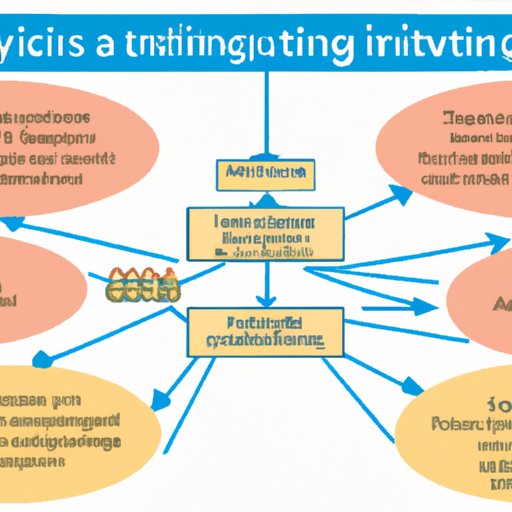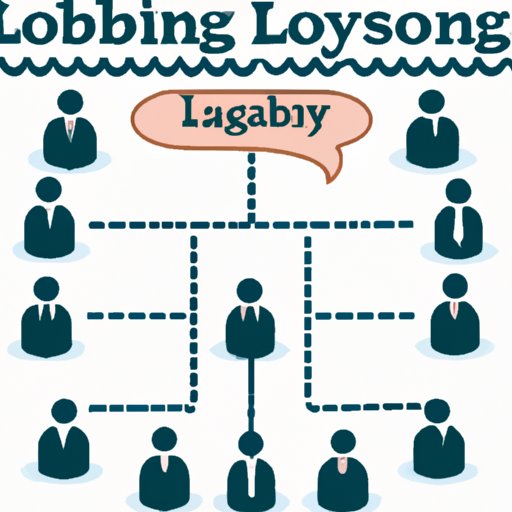
I. An Overview of Lobbying: What it is and How it Works
Lobbying is a powerful tool used by individuals and organizations to influence public policy decisions. It is a complex process that involves gathering information, crafting strategies, establishing connections, and executing strategies. But what exactly is lobbying and how does it work?
a. Definition of Lobbying
Lobbying is defined as the act of attempting to influence government decisions through direct or indirect communication with legislators and other decision makers. It is a form of advocacy and often involves providing information, promoting ideas, and influencing legislation. Lobbyists may be employed by corporations, non-profit organizations, trade associations, or professional organizations. They may also be hired privately to represent the interests of individuals or special interests.
b. Who are Lobbyists?
Lobbyists are professional advocates who specialize in influencing public policy decisions. They typically have extensive knowledge of the legislative process and the issues they are advocating for. Lobbyists may be employed by corporations, non-profit organizations, trade associations, or professional organizations. They may also be hired privately to represent the interests of individuals or special interests.
c. The Different Types of Lobbying
There are several different types of lobbying, each with its own set of tactics and strategies. Corporate lobbyists work on behalf of businesses to influence legislation that will benefit their clients. Non-profit lobbyists advocate for causes or organizations and seek to influence legislation that will help their cause. Professional lobbyists are hired to represent specific interests or clients and use their expertise to shape policy decisions. Finally, grassroots lobbying involves rallying public support to sway government decisions.

II. Exploring the Different Types of Lobbyists
The various types of lobbyists can be broken down into three main categories: corporate, non-profit, and professional. Each type of lobbyist has its own unique set of skills and strategies for influencing public policy decisions.
a. Corporate Lobbyists
Corporate lobbyists are employed by businesses to influence legislation that will benefit their clients. They use a variety of tactics to achieve their goals, such as making monetary contributions to politicians, providing research and analysis on proposed legislation, and meeting directly with legislators. Corporate lobbyists must be well-versed in the legislative process and have a thorough understanding of the industry they are representing.
b. Non-Profit Lobbyists
Non-profit lobbyists are employed by organizations and causes to influence legislation that will help their cause. Like corporate lobbyists, they use a variety of tactics to achieve their goals, such as making monetary contributions to politicians, providing research and analysis on proposed legislation, and meeting directly with legislators. However, non-profit lobbyists are more focused on raising public awareness about their cause and engaging the public in their efforts.
c. Professional Lobbyists
Professional lobbyists are hired to represent specific interests or clients and use their expertise to shape policy decisions. They may be employed by a particular company or organization, or they may be independent contractors who are hired by a variety of clients. Professional lobbyists typically focus on developing relationships with key legislators and providing research and analysis on proposed legislation.
III. Examining the Role of Money in Lobbying
Money plays an important role in lobbying. Lobbyists may make monetary contributions to politicians in order to gain access and influence decision makers. They may also provide research, analysis, and advice in exchange for monetary compensation.
a. Monetary Contributions to Lobbyists
Monetary contributions to lobbyists are a common practice in lobbying. Lobbyists may make monetary contributions to politicians in order to gain access and influence decision makers. These contributions can range from small donations to large sums of money. Lobbyists may also provide research, analysis, and advice in exchange for monetary compensation.
b. Benefits of Making Monetary Contributions
Making monetary contributions to lobbyists can be beneficial for both the lobbyist and the politician. For the lobbyist, it allows them to gain access and influence decision makers. For the politician, it can be a source of additional funding for their campaigns or initiatives. Additionally, it can be a way for the lobbyist to show appreciation for the politician’s efforts.
c. Potential Consequences of Making Monetary Contributions
Making monetary contributions to lobbyists can also have potential consequences. If the contributions are seen as excessive or inappropriate, they can lead to accusations of bribery or corruption. Additionally, there may be regulations that limit the amount of money that can be given to a particular politician or organization. It is important for lobbyists to familiarize themselves with the laws and regulations governing lobbying activities.
IV. Understanding the Impact of Lobbying on Policy Making
Lobbying plays an important role in shaping public policy decisions. Lobbyists can influence decision makers through direct communication, providing research and analysis, and making monetary contributions. However, there are both pros and cons to the influence of lobbyists on government decisions.
a. Influence of Lobbyists on Government Decisions
Lobbyists are able to influence government decisions in a variety of ways. They can provide research and analysis on proposed legislation, meet directly with legislators, and make monetary contributions to politicians. By doing so, they can shape public policy decisions in favor of their clients or causes.
b. Pros and Cons of Lobbyists’ Influence
The influence of lobbyists on government decisions can have both positive and negative effects. On one hand, lobbyists can provide valuable information and insight that can help inform decision makers. On the other hand, their influence can be seen as undue or unethical, especially if it leads to decisions being made in favor of special interests rather than the public good.
V. Investigating the Processes Involved in Lobbying
Lobbying is a complex process that involves gathering information, crafting strategies, establishing connections, and executing strategies. Lobbyists must be knowledgeable about the legislative process and be able to effectively communicate their message to decision makers.
a. Gathering Information
The first step in the lobbying process is gathering information. Lobbyists must be knowledgeable about the legislative process and understand the issues they are advocating for. They must also be familiar with the laws and regulations governing lobbying activities. Gathering this information will help them craft effective strategies and establish connections.
b. Crafting Strategies
Once the information has been gathered, lobbyists must craft strategies for achieving their goals. This includes deciding which tactics to use, identifying target legislators, and determining the best way to communicate their message. Lobbyists must also be aware of any potential obstacles or challenges they may face in achieving their goals.
c. Establishing Connections
The next step is establishing connections with key legislators and decision makers. Lobbyists must be able to effectively communicate their message and build relationships with those in positions of power. This can involve making monetary contributions, attending events, and providing research and analysis.
d. Executing Strategies
The final step is executing the strategies developed in the previous steps. This involves meeting with legislators, providing research and analysis, and engaging the public in their efforts. Ultimately, the goal is to influence public policy decisions in favor of their clients or causes.

VI. Examining the Pros and Cons of Lobbying
Lobbying can be a powerful tool for influencing public policy decisions. However, it is important to consider both the pros and cons of lobbying before engaging in the process.
a. Benefits of Lobbying
The primary benefit of lobbying is that it can be an effective way to influence public policy decisions. Lobbyists can provide valuable information and insight to decision makers and help shape legislation in favor of their clients or causes. Additionally, lobbying can be an important tool in protecting the rights of individuals and special interests.
b. Drawbacks of Lobbying
The primary drawback of lobbying is that it can be seen as an unethical or undemocratic practice. Lobbyists may be accused of attempting to influence decisions in favor of special interests rather than the public good. Additionally, if not done properly, lobbying can lead to accusations of bribery or corruption.
Conclusion
Lobbying is a complex process that involves gathering information, crafting strategies, establishing connections, and executing strategies. It is an important tool for influencing public policy decisions, but it is important to consider both the pros and cons before engaging in the process. Lobbyists must be knowledgeable about the legislative process and be able to effectively communicate their message to decision makers in order to be successful.
(Note: Is this article not meeting your expectations? Do you have knowledge or insights to share? Unlock new opportunities and expand your reach by joining our authors team. Click Registration to join us and share your expertise with our readers.)
